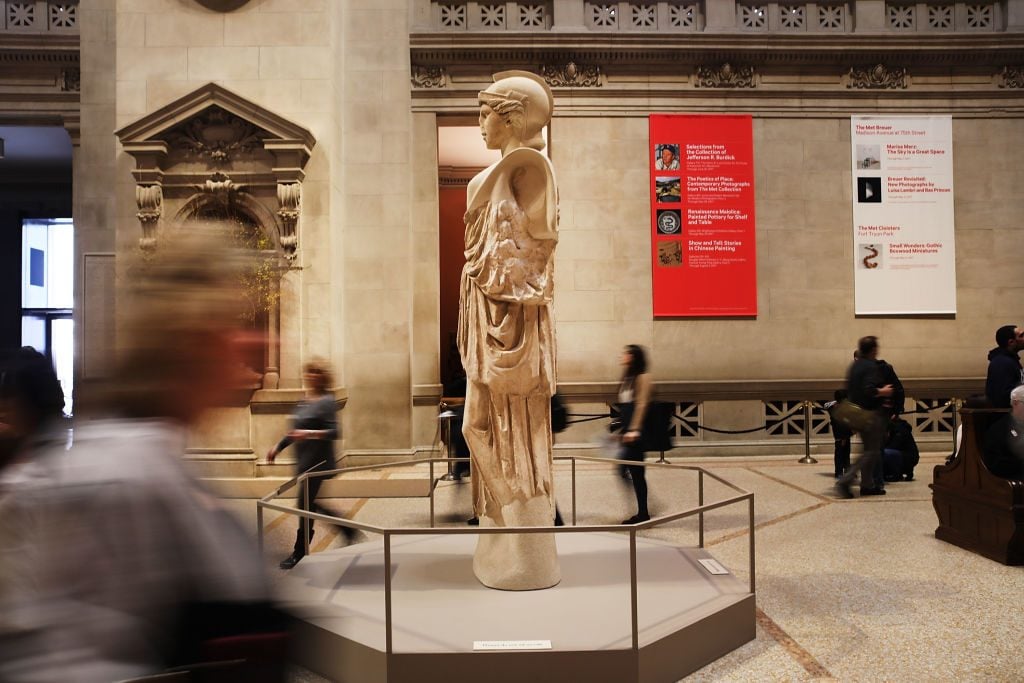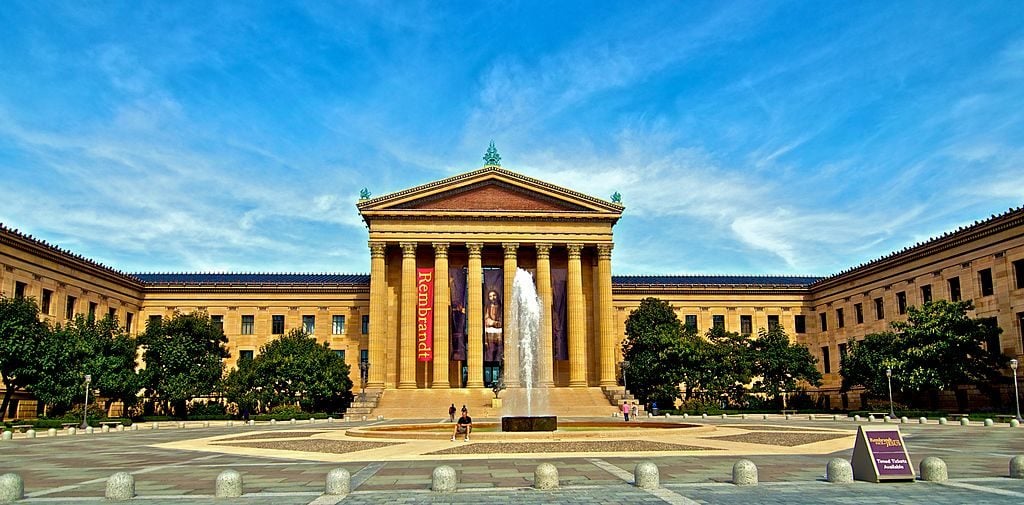Art World
How Museums Use—and Misuse—Corporate Consultants as a Bandaid to Address Diversity and Solve Their Biggest Problems
Missteps and voided promises are bringing new scrutiny to for-profit strategies in the nonprofit field.

Missteps and voided promises are bringing new scrutiny to for-profit strategies in the nonprofit field.

Zachary Small

The task should have been simple for an executive search firm like m/Oppenheim Associates. The Indianapolis Museum of Art at Newfields was paying the company to help bring a new director through its doors. But the job listing on the search firm’s website created an explosive controversy when it expressly requested that applicants help attract not only a more diverse crowd, but also maintain its “traditional, core, white art audience.”
Public outrage from the post marked the conclusion of Charles Venable’s nine-year tenure as the museum’s director and chief executive; last week, he resigned under pressure from employees and activists after a petition calling for his departure gained more than 2,000 signatures.
Demands in a separate letter signed by more than 100 Newfields employees were addressed in a joint statement issued by the museum’s trustees and governors—all except the “critical demand” that executives terminate their contract with m/Oppenheim, which has continued to advertise an amended version of the listing. The company did not respond to multiple requests for comment.

The Indianapolis Museum of Art. Photo by Avalon/Universal Images Group via Getty Images.
In recent years, museums have relied on a range of consultancies and law firms to navigate everything from executive searches, diversity initiatives, crisis management, and union avoidance. Oftentimes, these relationships are born from the corporate experience and personal relationships of board members.
“Consultants are hired to tell museums the truth,” says Adrienne Horn, the president of Museum Management Consultants and a former executive board member for the American Association of Museums.
But a series of missteps and hollow promises from institutions that have relied on third-party advice are bringing new scrutiny to the influx of for-profit strategies in a nonprofit world. And when those plans go awry, it’s often the museum executives who pay the price, while consultants simply move on to the next job.
“What happened at Newfields is a symptom of a much larger issue,” says Kelli Morgan, a nonprofit consultant who curated at the museum before resigning last year, alleging that the Indianapolis institution’s culture was toxic and discriminatory.
“Museums have been pulling from the corporate world for the last 30 years, and their strategies are frozen in time. What’s interesting is that leaders are now being expected to change.”
Corporate ideologies have produced a cottage industry of advisors specializing in museum management, a phenomenon driven in part by the business-school graduates now running some of America’s leading cultural institutions.
There are, for example, a cadre of C-suite executives who studied at the Yale School of Management, including top brass at the Metropolitan Museum of Art (Daniel Weiss, president), the Philadelphia Museum of Art (Timothy Rub, director, and Gail Harrity, president), and the Museum of Contemporary Art in Chicago (Claire Ruud, director of curatorial strategy).
“Sometimes, you really need an outside perspective,” says Laura Raicovich, an arts executive who has run both the Queens Museum and the Leslie-Lohman Museum. Raicovich says an organization will sometimes hire consultants when it lacks the resources to solve a problem, or to help envision a long-term strategic plan.
“But there is a lot of reactive consulting going around,” Raicovich adds, referring to the sudden ubiquity of consultants leading diversity initiatives and guiding organizations through the economic crisis of the pandemic. “I think the biggest problem is when consultants are driving the agenda, rather than the institution.”
When hell broke loose at Newfields earlier this month, the museum was nearly a half-year into an equity initiative helmed by Pink Consulting, a firm based in Minnesota that provides diversity training. (A spokesperson for the consultancy declined to comment, referring questions back to the museum, which did not respond to inquiries.)
Employees had also warned museum executives against the controversial job posting several weeks before m/Oppenheim published it.
But sources inside the museum say it was ultimately the director and the board’s decision to move forward with the language about maintaining white audiences. For employees, it seemed like the advances of one consultancy were negated by the actions of another.

Front view of the main building of the Philadelphia Museum of Art.
There are limits to what consultants can accomplish in museums where board members ultimately decide what recommendations are put in place. And in recent cases in which museums have hired lawyers to conduct investigations into misconduct allegations against senior officials, almost all the accused have been cleared of fault.
“Sometimes, it feels like the art world is the only industry where its professionals actively reject growth,” says Morgan, echoing what three other museum consultants told Artnet News.
For large institutions, it’s common for the left hand to occasionally miss what the right hand is doing. And the introduction of multiple outside advisors with seemingly oppositional goals has left many workplaces arguably worse off than they were before the consultants were hired.
Last year, the Philadelphia Museum of Art hired two different consultancies to help heal wounds after allegations of sexual misconduct and physical abuse surfaced against two former managers; shortly thereafter, executives retained lawyers to oppose employee efforts to unionize.
AORTA, the Anti-Oppression Resource and Training Alliance, was hired to meet with small groups of employees who confidentially shared their workplace experiences, while the consulting firm VallotKarp, which has also advised the Metropolitan Museum of Art, conducted a “cultural assessment” that revealed problems with leadership and hierarchy.
Meanwhile, Morgan Lewis & Bockius, a firm known for fighting against the $15 minimum wage, was hired to oppose union organizing. Employees pointed out that it may have been a conflict of interest to use the law firm, which is a gold-level corporate sponsor of the museum and employs Timothy W. Levin, a partner at the firm who sits on the museum’s corporate executive board.
A museum spokesperson says that Morgan Lewis has represented the institution for decades, and was brought in to help officials navigate the unionization process, adding that the corporate executive board has no governing power.
“It’s extraordinary that museums get away with this,” said Maida Rosenstein, president of Local 2110 of the United Auto Workers, which represents workers at several institutions, including the Museum of Modern Art and the New Museum. “Museums are spending significant amounts of money to fight unions and bring in consultants.”
Because museums rarely disclose the names of their consultants, much of this activity remains out of the spotlight. But using outside advisors is quickly becoming common practice elsewhere in the art world.
Even before the workers of Studio in a School publicly announced their intent to unionize, executives were lawyering up. The nonprofit organization, founded by the philanthropist and MoMA president emerita Agnes Gund to bring arts programming into New York City classrooms, has retained the services of Jane B. Jacobs, an employment litigation attorney who has represented clients looking to avoid unionization. According to Rosenstein, the nonprofit has also hired a human resources consultant to run anti-union presentations during mandatory staff meetings.
Studio officials did not immediately respond to requests for comment.